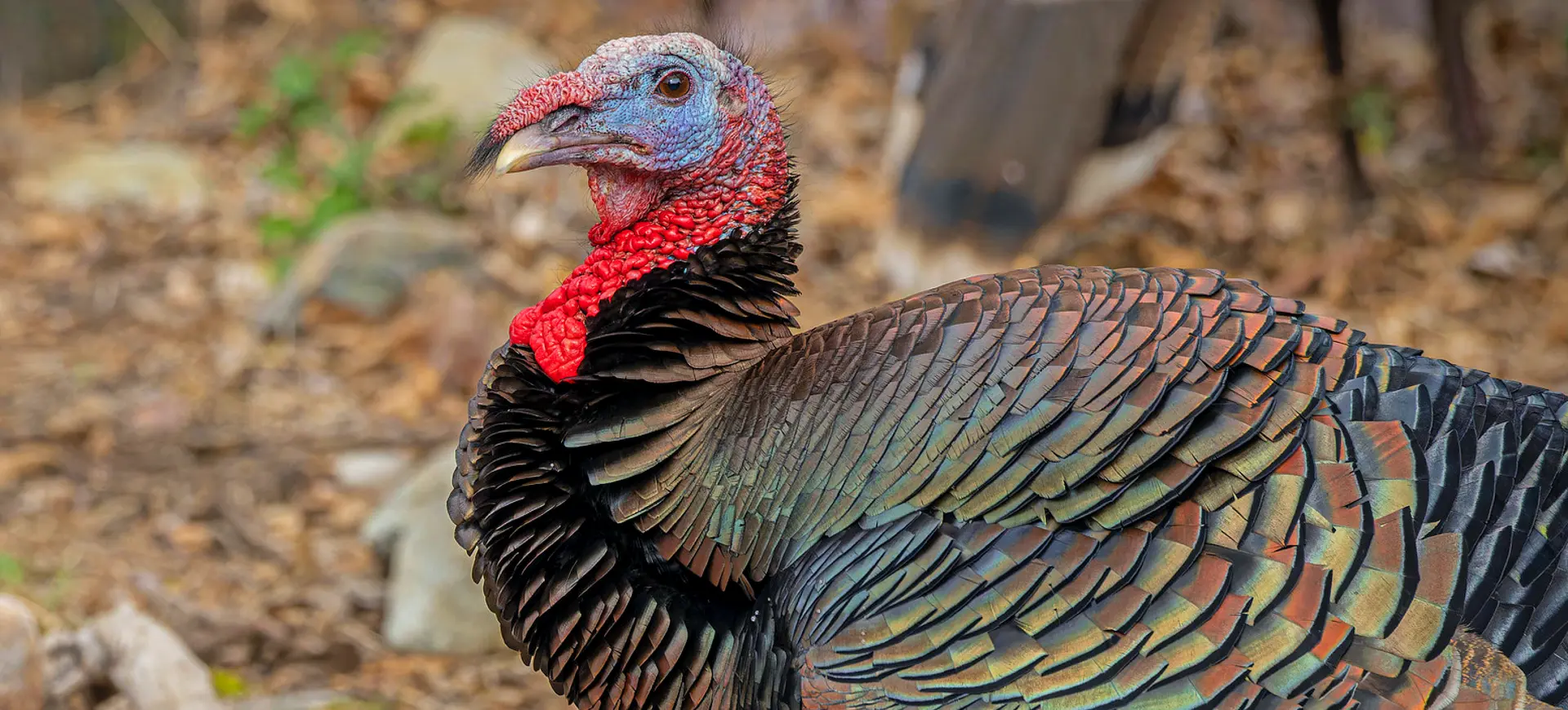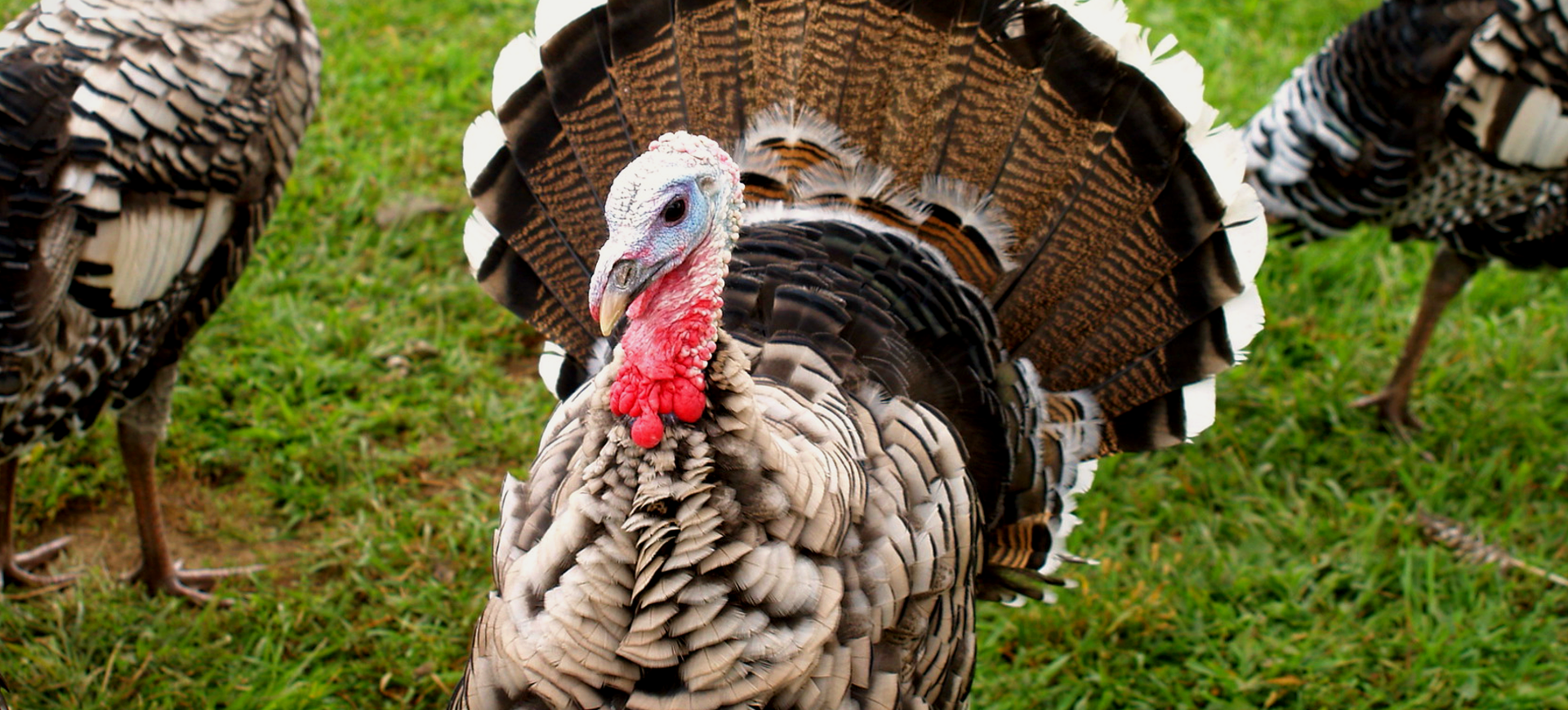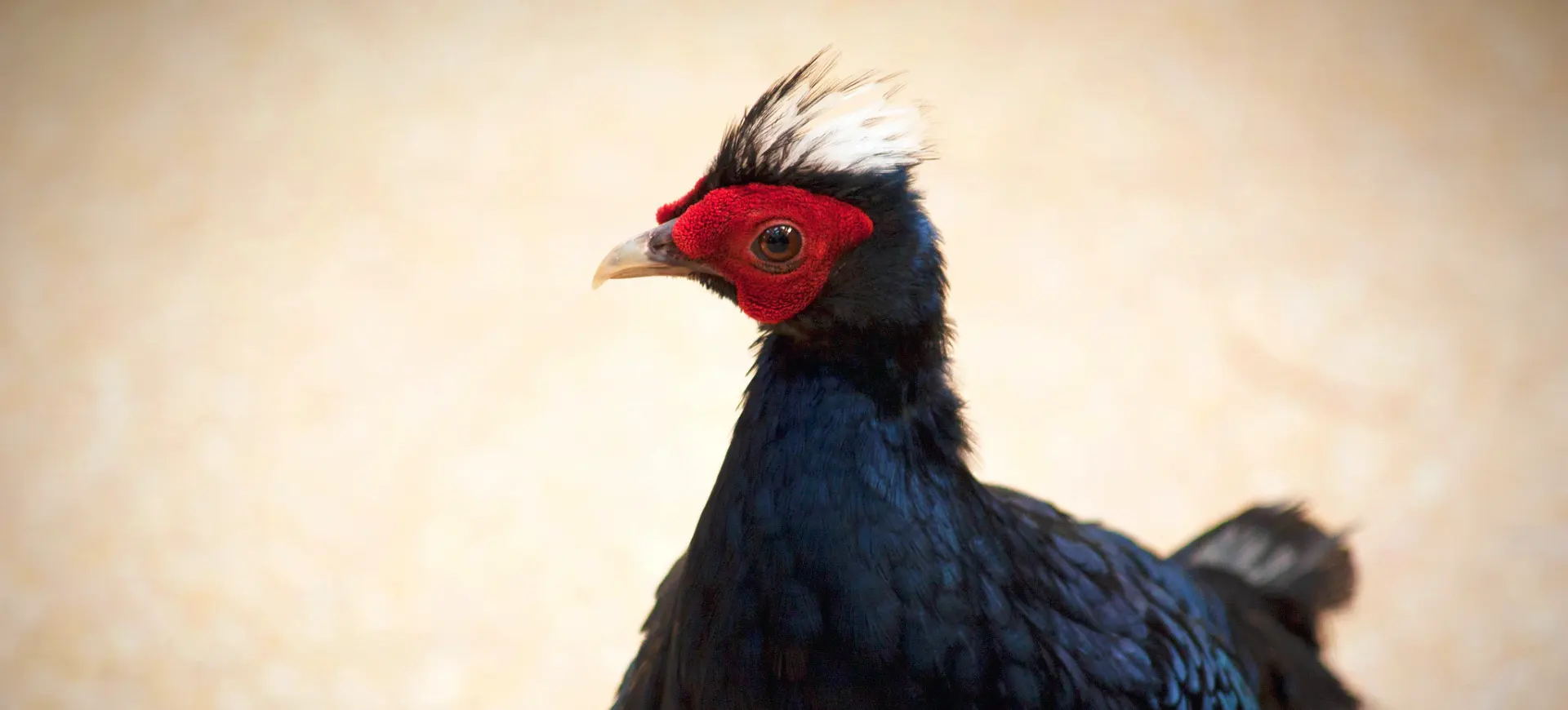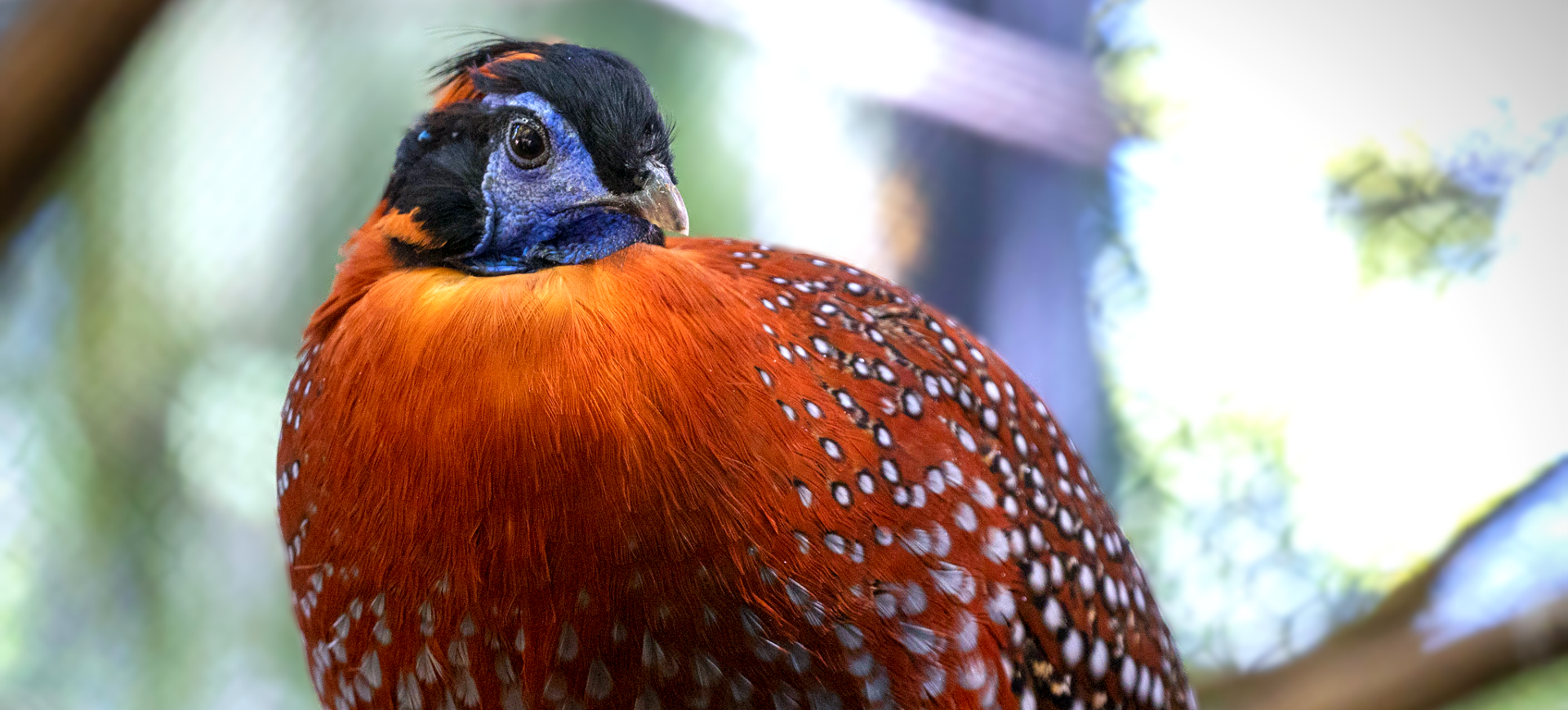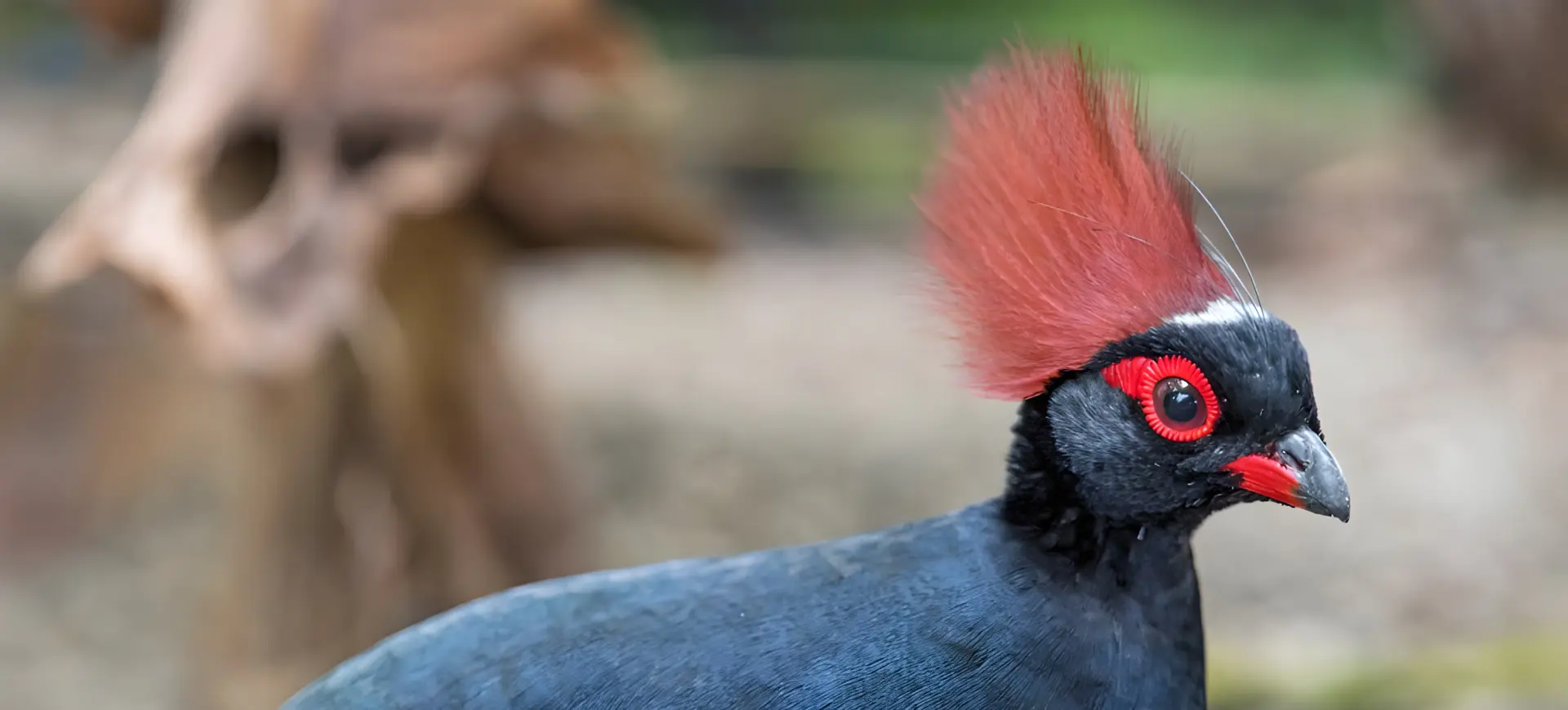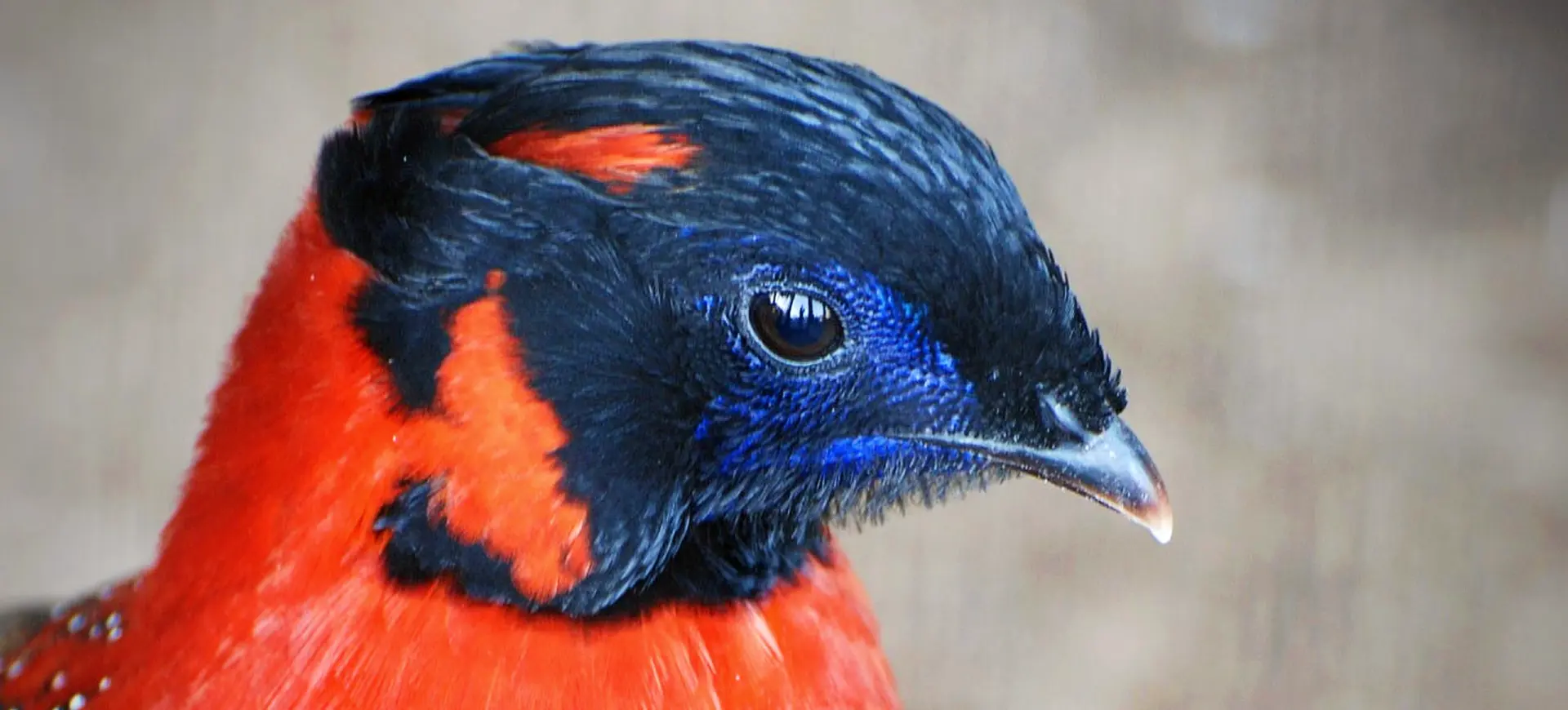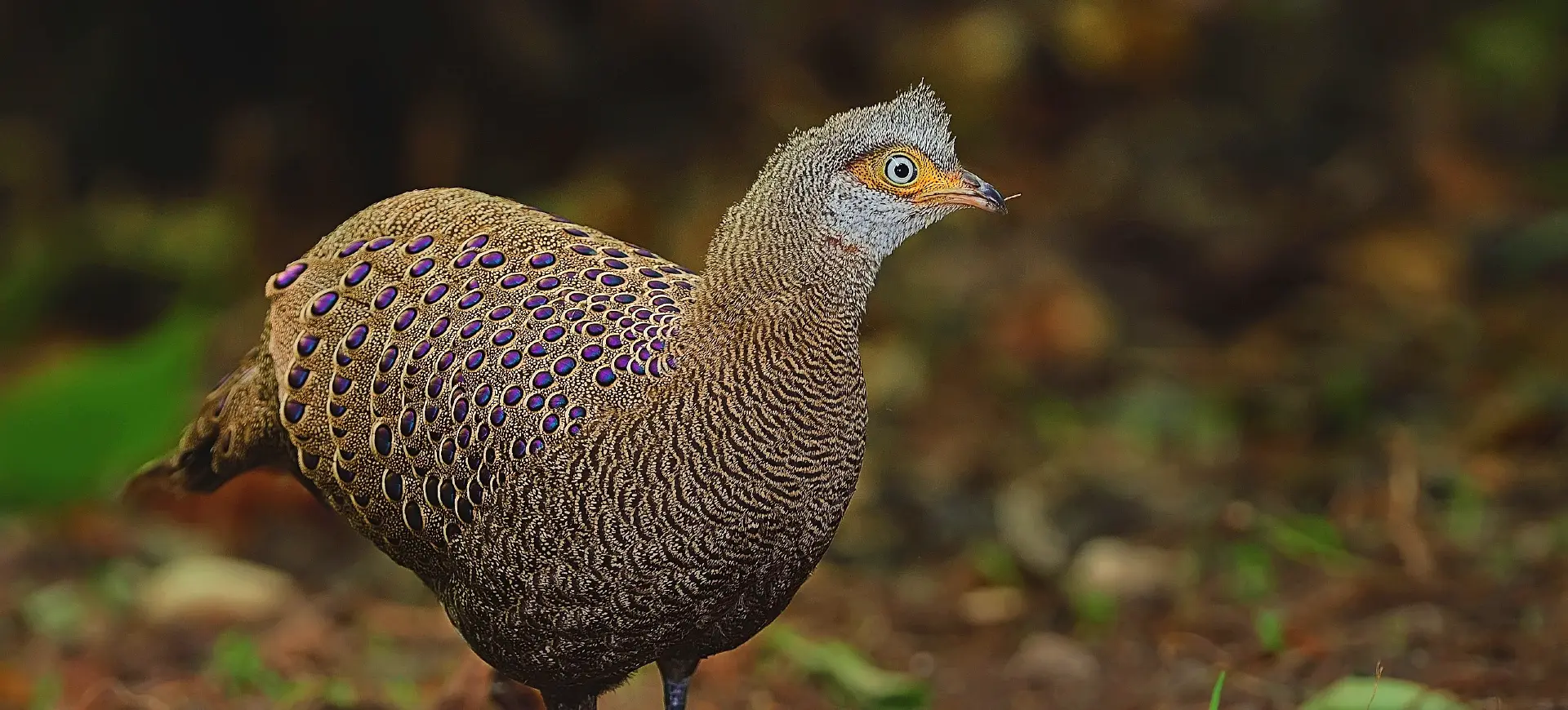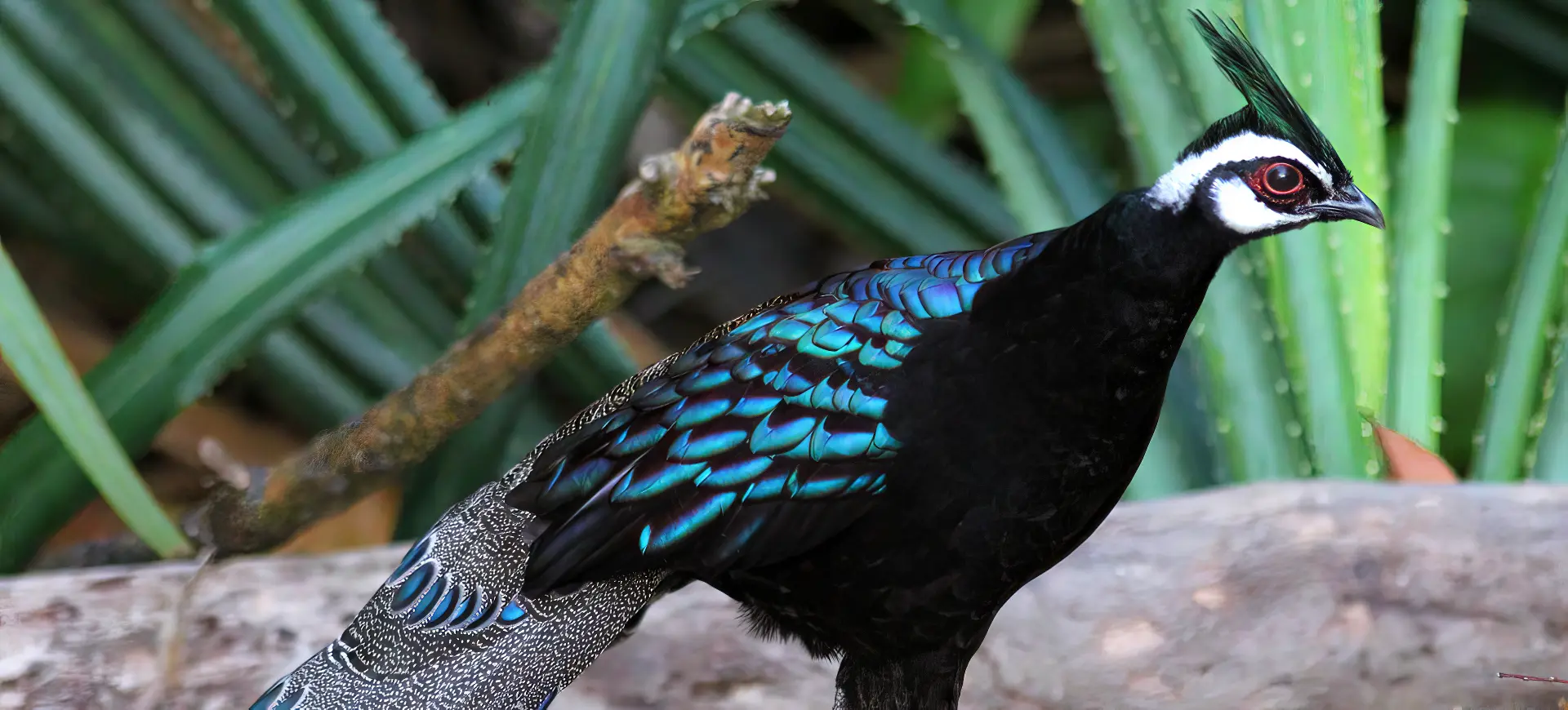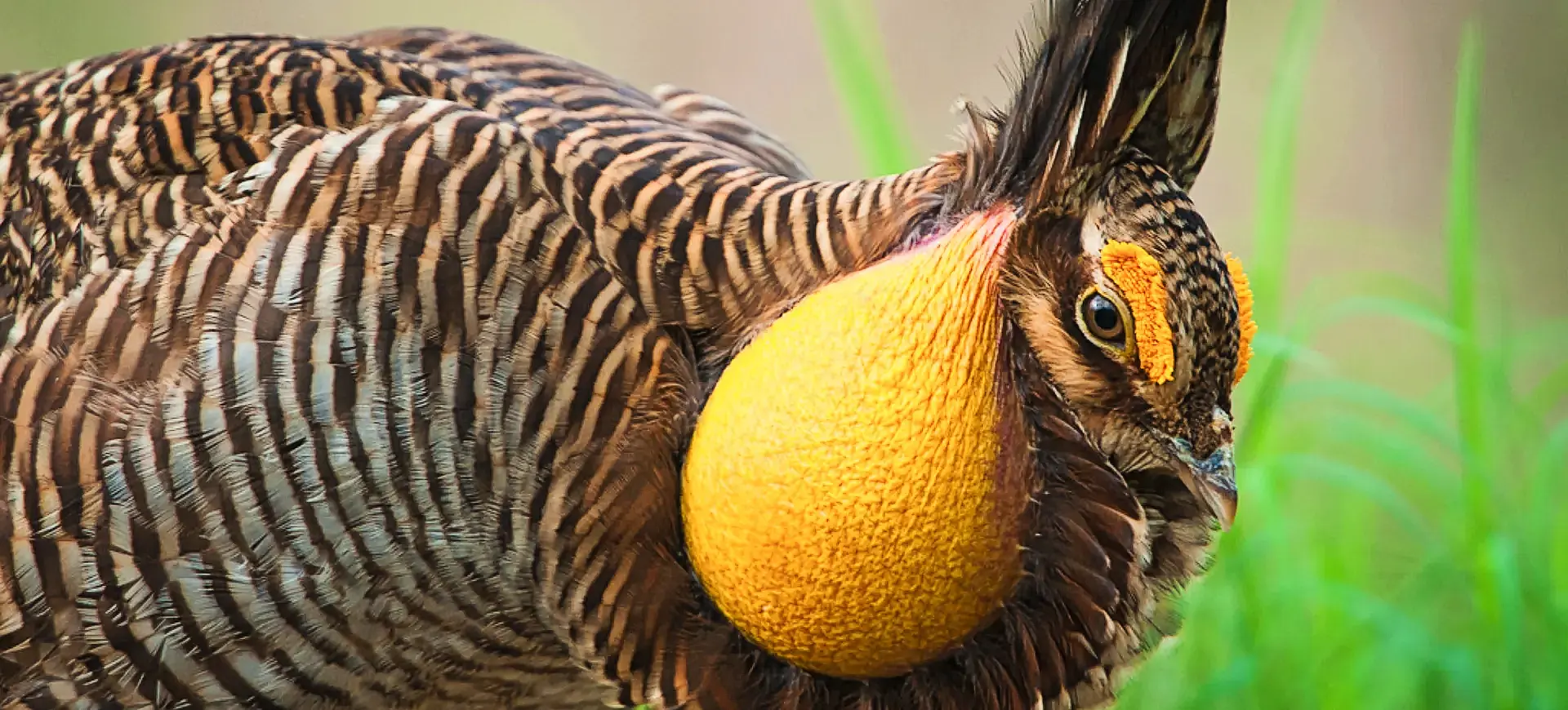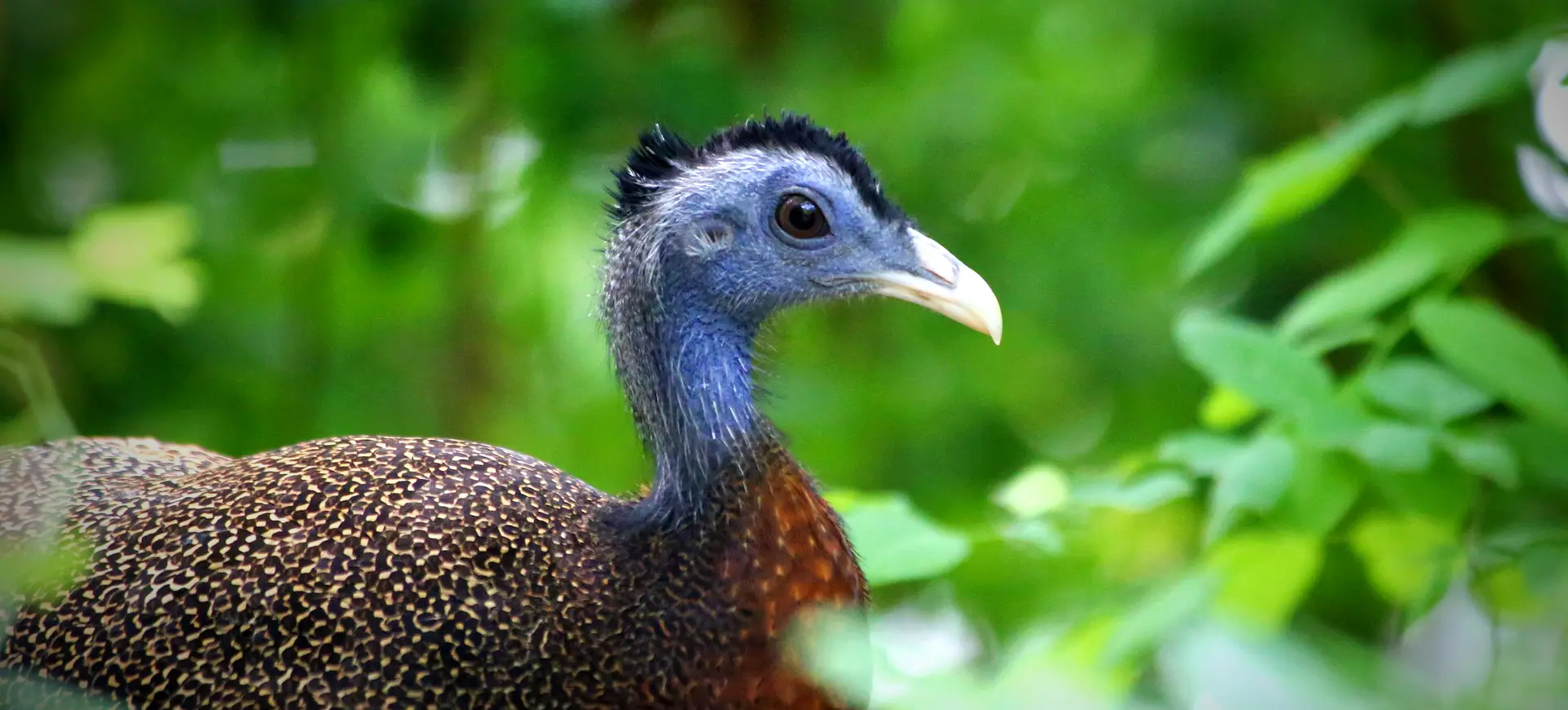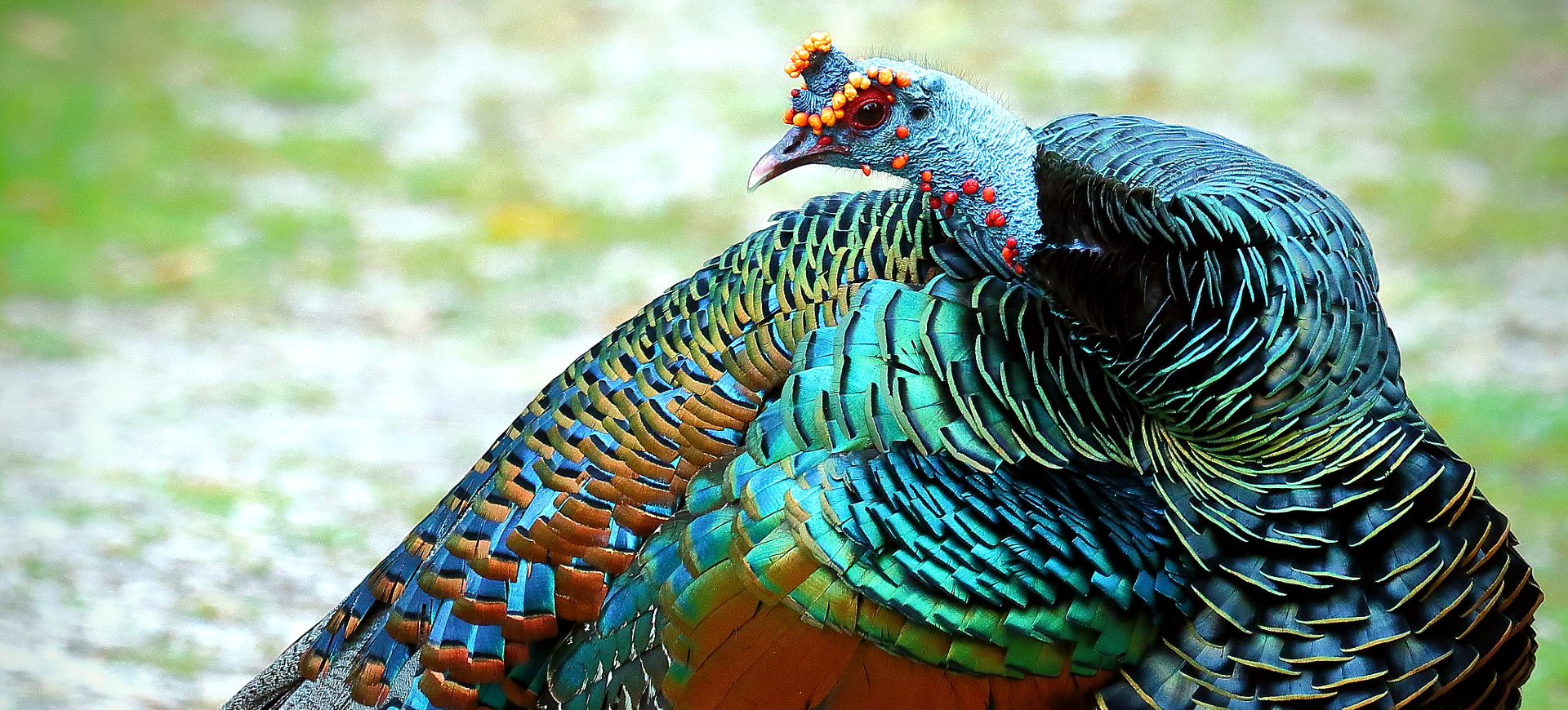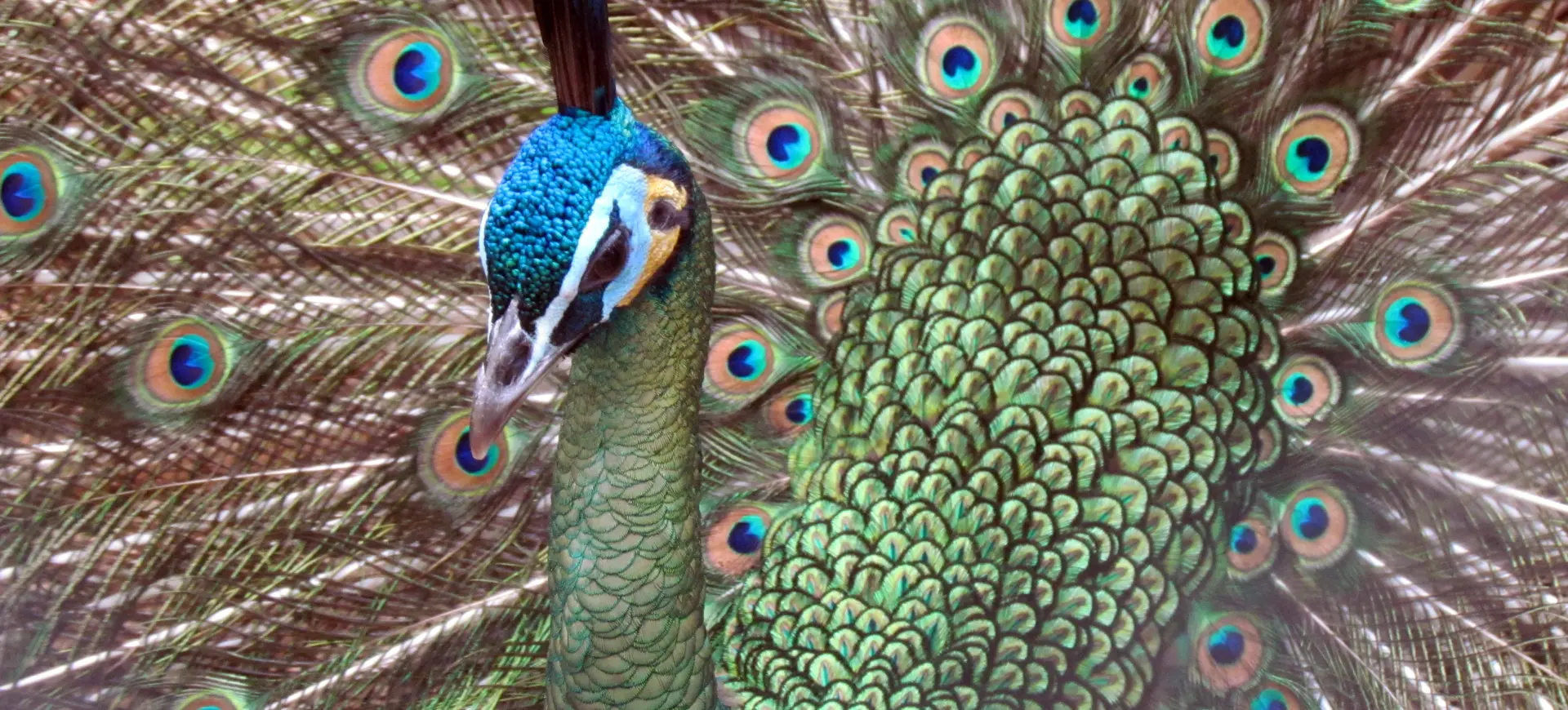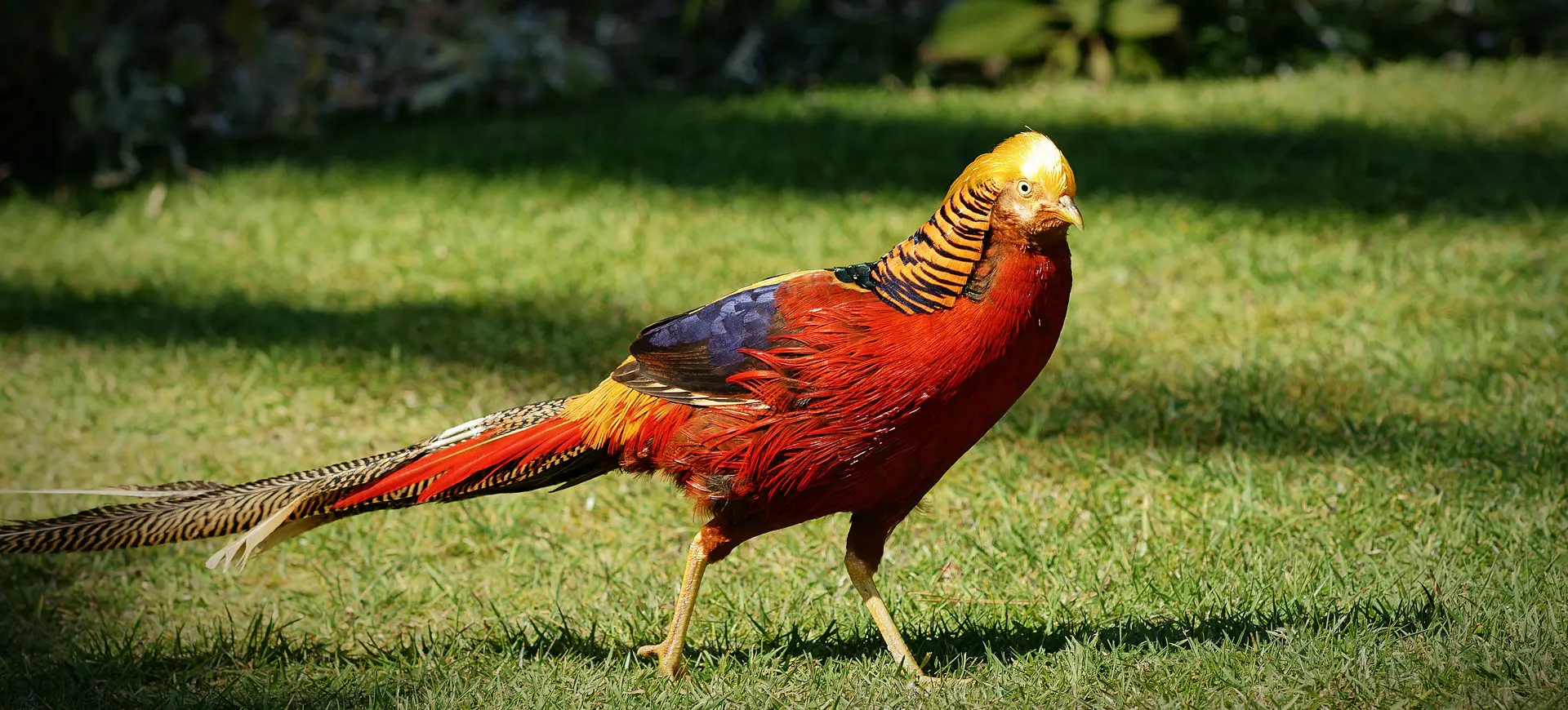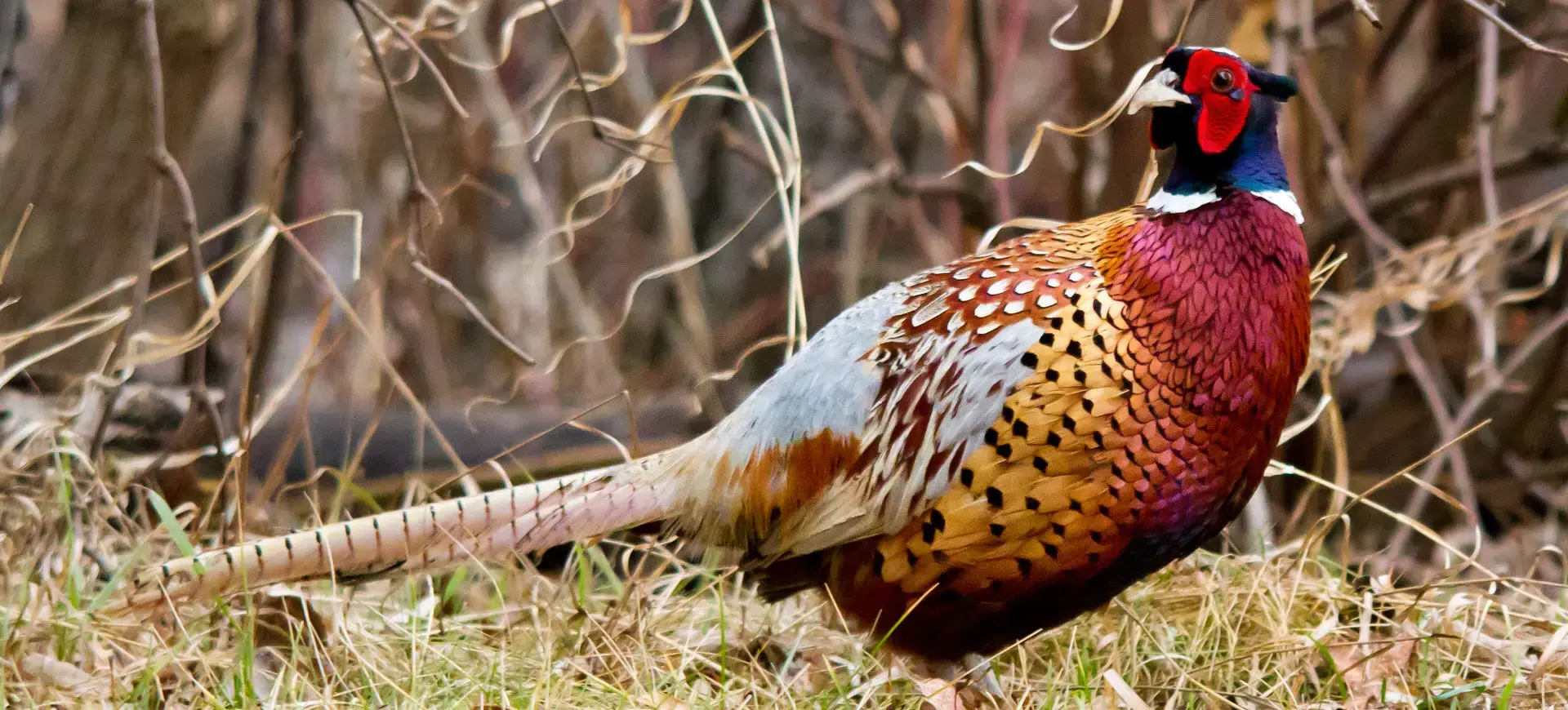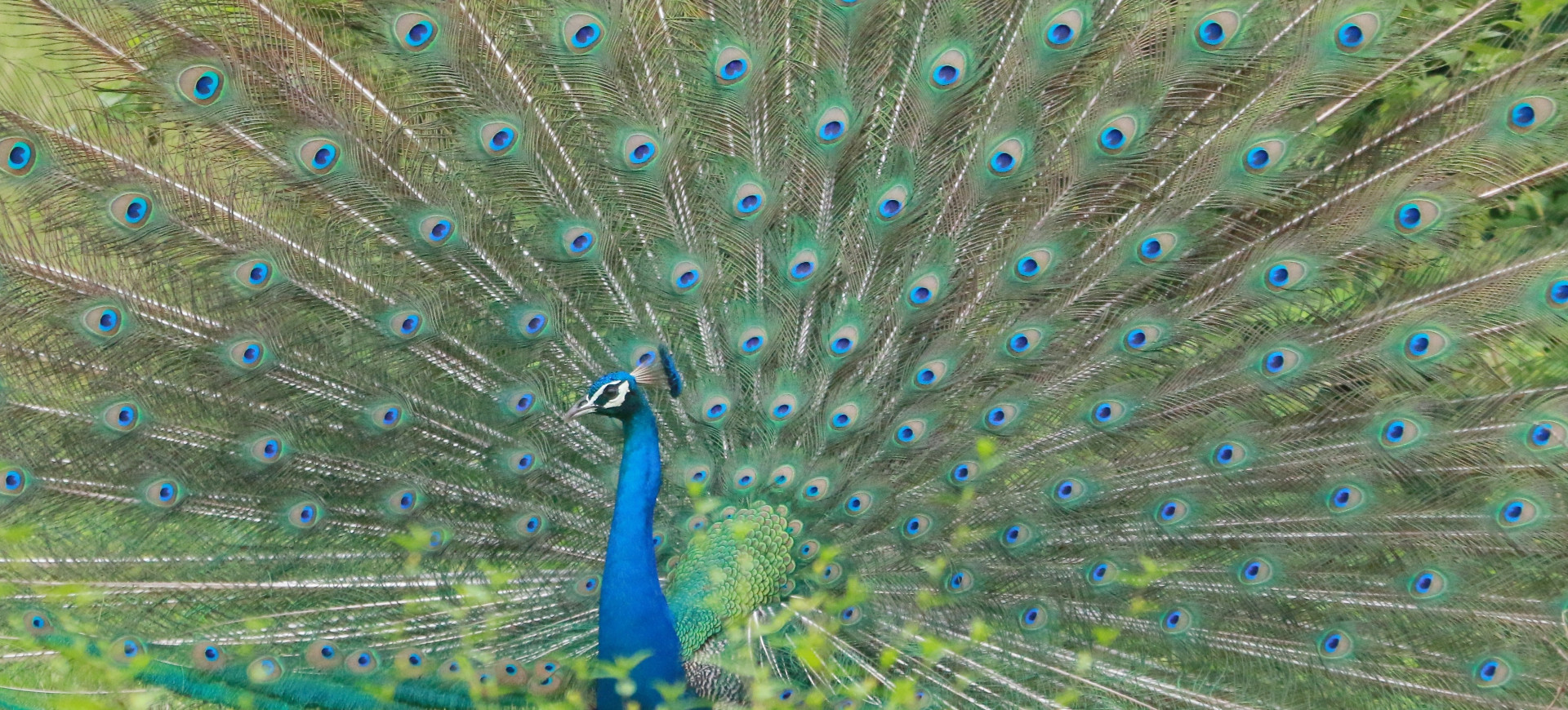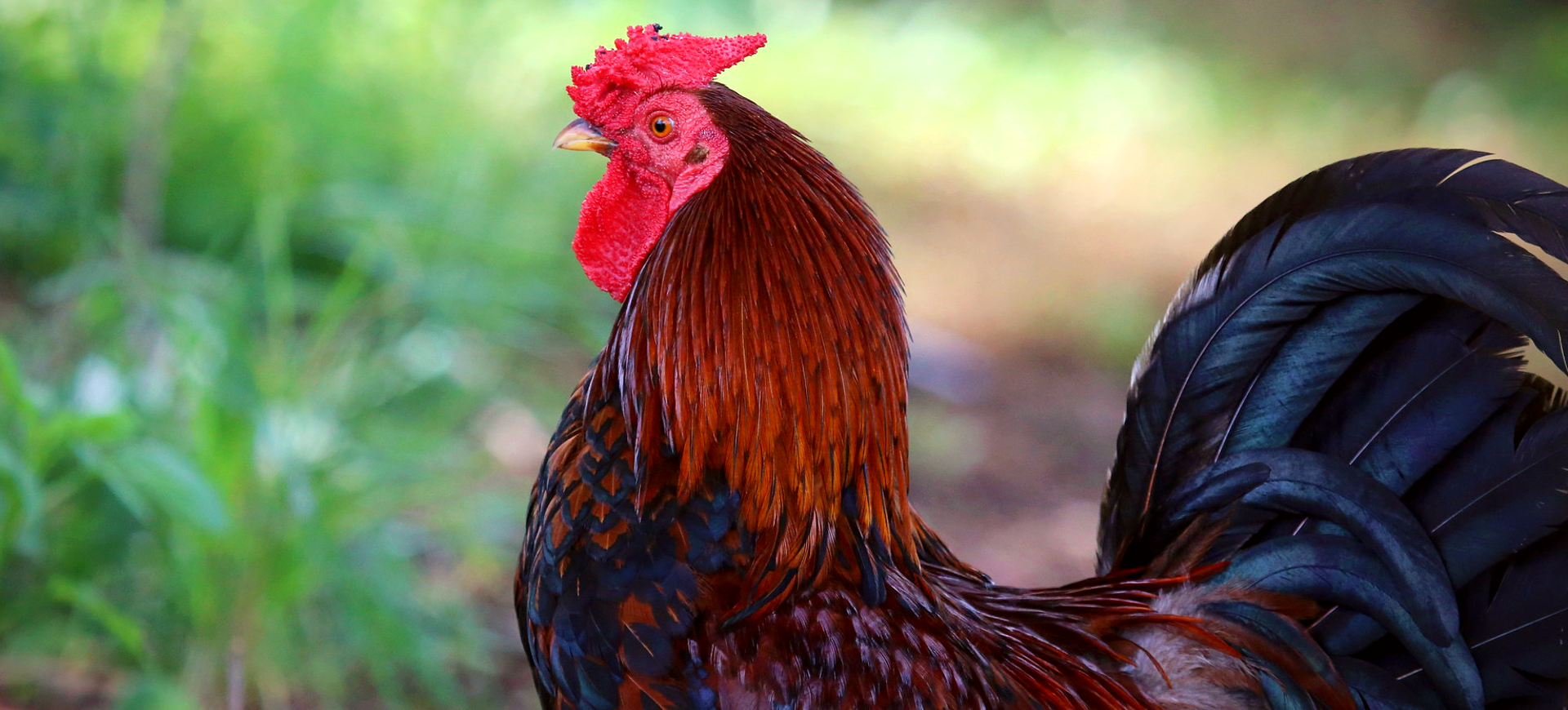Overview
Wild Turkey (Meleagris gallopavo) is a large ground-dwelling bird native to North America and is the heaviest member of the diverse Galliformes. It is distinct in its plumage, with a fan-shaped tail and wattled neck. Both male and female Wild Turkeys have a distinctive fleshy wattle or protuberance that hangs from the top of the beak, though the males are larger.
Males are referred to as “toms” or “gobblers,” they are known for their bold and vibrant displays during the mating season. The iridescent color of the feathers can appear shiny with hues of red, green, copper, bronze, and gold. The gobble of a Wild Turkey is a well-known sound with a unique resonance that carries for up to a mile.
Females, called “hens,” are generally smaller and less colorful than males. Wild Turkeys are adaptable birds found in forests, grasslands, and swamps. They are social animals that typically roam in flocks and have varied diets, including seeds, nuts, fruits, and small insects.
Taxonomy
Kingdom
Phylum
Class
Order
Family
Genus
Species
Sub Species
Type
Physical Description:
Wild Turkey is a remarkable bird that prominently exhibits sexual dimorphism, in which males are generally more massive and exhibit more colorful and vibrant plumage than females. The males, or “toms,” possess a strikingly darker overall coloration, characterized by rich shades of copper, bronze, and gold feathers that can gleam in sunlight. In contrast, the head often lacks feathers, appears bald, and is adorned with skin that can change colors between red, white, and blue. These males also have long, sturdy legs equipped with sharp, robust spurs, which they utilize in aggressive fights for dominance or mating rights.
Females, known as “hens,” present more subdued coloration, primarily of earthy brown and gray tones that blend well with their natural surroundings. The body of the female Wild Turkey is sleek and rounded, with a streamlined shape that contrasts with the more robust male. Uniquely, the breast of the female is equipped with a distinctive “beard” made of coarse, hair-like feathers, a feature that can occasionally be found in males as well but is more pronounced in females. A well-known characteristic of both genders, though differently emphasized, is the fanning of the tail during various displays, including mating rituals. This elaborate fanning of tail feathers serves as both a communication tool and an aesthetic attribute, symbolizing the complexity and beauty of this fascinating species.

Lifespan: Wild: ~5 Years || Captivity: ~10 Years

Weight: Male: 11-24 lbs (5-11 kg) || Female: 5.5-12 lbs (2.5-5.5 kg)

Length: Male: 39-49 inches (99-125 cm) || Female: 30-37 inches (76-94 cm)

Height: Male: 3.9-4.7 ft (1.2-1.4 m) || Female: 2.6-3.6 ft (0.8-1.1 m)

Wingspan: Male & Female: 49-57 inches (124-145 cm)

Top Speed: 25 mph (40 km/h)
Characteristic:
Native Habitat:
Wild Turkeys inhabit a wide range of ecosystems across North America, from hardwood forests and mixed coniferous forests to grasslands and swamps. They prefer open land and dense understory areas, providing feeding opportunities and protection from predators.
Water availability is also crucial, as they need to drink regularly. The varied topography of their habitat allows for nesting, roosting, and foraging in different areas, enabling them to adapt to seasonal changes and human encroachment on their territory.
Biogeographical Realms:
Continents:
Countries:
Diet:
Diet & Feeding Habits:
Wild Turkeys are omnivorous, consuming a wide variety of food items. Their diet consists mainly of plant material, including acorns, nuts, seeds, berries, and small grains. They are also known to eat insects, small amphibians, and reptiles.
These birds are primarily ground foragers, using their strong beaks to scratch and dig for food. During the winter, when food is scarce, they rely heavily on mast-producing trees like oaks and beeches. Their ability to adapt to various food sources has allowed them to thrive in diverse habitats.
Mating Behavior:
Mating Description:
The mating system of Wild Turkeys is polygynous, where males mate with multiple females during the breeding season. The courtship display involves males puffing up their bodies, fanning their tail feathers, and making a drumming sound while the bright colors of their heads intensify.
Females choose their mates based on these displays and the males’ fighting abilities. After mating, females lay and incubate the eggs independently, typically in a nest hidden by vegetation.
Reproduction Season:
Birth Type:
Pregnancy Duration:
Female Name:
Male Name:
Baby Name:
Social Structure Description:
Wild Turkeys are social birds that typically live in flocks. During the non-breeding season, males may form all-male groups, while females and young often group together. These flocks protect from predators and help in locating food.
During the breeding season, social dynamics change, with males competing for mates and establishing dominance hierarchies. Communication within the flock is complex, involving various vocalizations and body language. Understanding their social structure is vital for effective management and conservation.
Groups:
Conservation Status:
Population Trend:
The population of Wild Turkeys has seen a significant recovery since the early 1900s when numbers were severely depleted due to hunting and habitat loss. Conservation and management efforts, including hunting regulations and reintroduction programs, have been vital in their resurgence.
The current wild population is around 7 million birds spread across North America. Though stable and even increasing in some areas, continued habitat protection and responsible hunting practices are essential to maintaining their numbers.
Population Threats:
Despite their success, Wild Turkeys still face threats primarily from habitat loss and fragmentation. Urbanization, agriculture, and deforestation have reduced suitable habitats, leading to localized declines.
Illegal hunting and collisions with vehicles also pose risks, particularly in areas where human settlements are expanding. Climate change, with its potential to alter food availability and habitats, may present future challenges to the Wild Turkey population.
Conservation Efforts:
Conservation efforts for Wild Turkeys have been largely successful, focusing on habitat protection, regulated hunting, and reintroduction programs. Wildlife agencies and conservation organizations work together to manage populations and ensure sustainable hunting practices.
Education and public awareness campaigns also contribute to responsible coexistence with these birds. The recovery of Wild Turkey is often cited as a conservation success story, but ongoing efforts are required to maintain their numbers and habitats.
Additional Resources:
Fun Facts
- Wild Turkeys can run at speeds of up to 25 mph and fly at speeds of 55 mph.
- They have excellent vision during the day but poor night vision.
- Wild Turkeys were a crucial food source for Native Americans and early settlers.
- Benjamin Franklin once proposed the Wild Turkey as the national bird of the United States.
- They can have more than 20 distinct vocalizations used for communication within the flock.
- Male turkeys’ heads change colors depending on their emotions.
- Wild Turkeys take dust baths to keep their feathers clean and parasite-free.
- Unlike domestic turkeys, Wild Turkeys are agile and have a strong survival instinct.
- They are named “turkey” due to confusion with Guinea Fowl, imported through Turkey.
- Wild Turkeys roost in trees at night to protect themselves from predators, using their strong flying abilities to reach their roosting spots.










